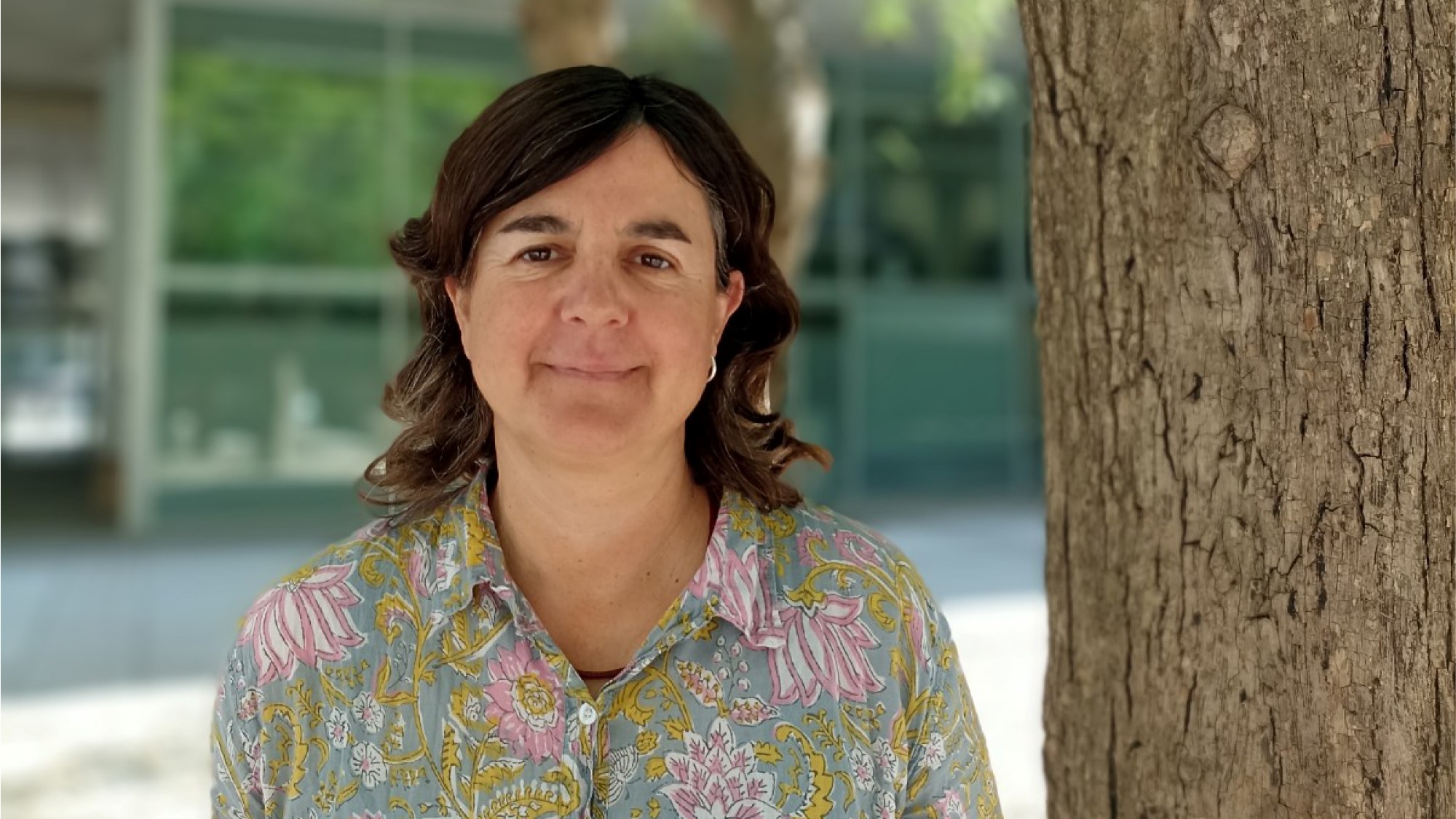Mar Albà, ICREA professor and coordinator of the Evolutionary Genomics Research Group of the Hospital del Mar Medical Research Institute (IMIM), has received a grant of 2.5 million euros from the European Research Council (ERC). This grant will serve to develop the NovoGenePop project (Deciphering de novo gene birth in populations), which will continue her laboratory’s line of work on de novo genes, those that have been recently created from non-coding regions of the genome.
The ERC Advanced Grant awarded to Albà, of €2.5 million for five years, was one of the 13 awarded in Spain, out of a total of 253. Almost 1,800 researchers had applied for the 2021 edition.
Albà, who is also an associate professor at Pompeu Fabra University, has recently been appointed director of the Biomedical Informatics Research Program (GRIB) – a joint research program between the Hospital del Mar Medical Research Institute (IMIM) and the Department of Medicine and Life Sciences, Pompeu Fabra University (MELIS-UPF) with more than 70 people. Currently, the IMIM researcher shares the direction of the GRIB with Ferran Sanz, from UPF.
We talked to her about these two recent recognitions.
———————–
Congratulations on your ERC grant Mar! You have been one of the 253 chosen from almost 1,800 projects… How do you feel?
It was my first time applying for an ERC grant, and it’s really great that I got it! The amount of resources (€2.5 million) has nothing to do with that of other projects… Above all, I hope that my positive experience encourages other GRIB colleagues or other people who know me to apply for this kind of funding; I’d be happy to help anyone who wants some tips!
I hope that my positive experience with this European scholarship encourages other colleagues to apply for them
In addition to the money, I think it is also a recognition of my career. The ERC grants are very competitive, the project had 8 reviewers, all of them experts in the field. They are also “high risk, high gain” projects, that is to say, risky projects, somewhat ‘crazy’, which may not turn out completely as expected; but if they do they can be very fruitful. Therefore, they have to trust that you will be able to do it.
Well, you have been in the field of de novo genes for many years…
15 years ago we were one of the few laboratories to work on it, and many people were skeptical about the creation of new genes by this mechanism. Now, de novo genes are already appearing in evolution books, they are studied at the university… It is incredible to have been part of the consolidation of this knowledge; surely the greatest job satisfaction of my life!
Can you explain to us what these genes are, and what the NovoGenePop project consists of?
De novo genes appear when, due to random mutations, a DNA sequence that did not ‘mean’ anything suddenly now becomes transcribed into RNA. If, in addition, this piece of RNA that is transcribed has an open reading frame, it can give rise to a new protein. Thus, a new gene is born.
This happens by chance in an individual. If this new gene is deleterious, if it has negative consequences, it will end up disappearing. But if it is useful, it will begin to spread through the population over generations. It may eventually be a new gene present in the entire species. But this takes thousands of years… In the meantime, it will be a gene that is present only in some individuals of the species.
This is our hypothesis: that these de novo genes appear much more often than we think, and that for a time they are present only in some individuals of the population – before disappearing or becoming fixed to the entire species. In this project, we will develop bioinformatic tools to identify these genes that are specific to certain individuals or populations and analyze them better, to confirm this hypothesis.
Our hypothesis is that de novo genes appear often, and that for a time they are present only in some individuals of the population.
How many de novo genes do you think there are in humans?
I think there are probably hundreds. But we don’t know them, because practically nobody is studying them; we always use the same reference databases, which do not contain these genes that have appeared by chance and are found in only part of the population. Nor do we know their dynamics; how quickly they appear and disappear…
And how will you find them?
We will use some human cell lines that already exist and are used to study human diversity. These cell line’s genomes, transcriptomes and translatomes (that is, their entire DNA sequence, but also everything that is transcribed into RNA and what is translated into proteins) have already been published. We will analyze them to look for individual differences, and we will compare them with data from chimpanzees and gorillas – thanks to the collaboration with the group led by Tomàs Marquès Bonet from the Institute of Evolutionary Biology (IBE: CSIC-UPF) – to confirm that the new genes we found are specific to humans.
You will also study it in yeast…
Yes, yeast is very useful for us to understand the mechanics of the process of creating new genes, because they are much more diverse than humans, as well as easy to manipulate. The creation of genes de novo is a universal phenomenon and therefore it does not matter to study it in one species or another…
And why is it important to study these genes de novo at the level of human populations?
They may have implications for understanding the molecular mechanisms of some populations. For example, a point mutation found in some individuals of a population in Melanesia gives rise to an entirely new promoter, causing a hitherto undescribed RNA to be transcribed. This transcript interferes with beta-globin expression and causes thalassemia, only in this population! Phenomena of formation of new RNAs could also occur due to mutations in cancer.
On to another subject…
What does your appointment as director of the biomedical informatics program at IMIM mean, as the first woman in the history of the center to direct a program?
In the collective imagination we continue to think that the director of a center or a research program, like many other things, will be a (white) man with a tie… it fits better with what we unconsciously expect. Things are beginning to change, albeit very slowly. As a matter of justice and surely in part due to external pressure, because the evaluation bodies and committees request it, progress is being made towards parity. I think it’s good, and in my case in particular, I hope it serves as a model to see more women in leadership positions, and that this starts to happen in a more natural way.
Still today, in the collective imagination, the director of a research center or program is always a white man with a tie.
What is your vision of the future for the GRIB?
Perhaps there are three things I would like to accomplish. The first, that we continue to obtain European or international funding. This is essential considering how little funding there is at the state level. Sometimes I think that due to lack of resources we don’t make the most of our abilities, we could go much further with more adequate funding. A second thing is to also continue with this good combination of IMIM and UPF groups, since GRIB is a hybrid program of both centres. Finally, it would be very good to try to incorporate a new research group in the next three years.
This hybridization between centers is one of the raison d’être of the PRBB…
I am an ICREA researcher and I could go somewhere else; but I love working here!! There is no place like this in Barcelona, with this good atmosphere. I have collaborated with many PRBB groups and it is very enriching. And clearly, being in the same building has made it so much easier. Apart from the magnificent scientific-technical services to which we have access, both from the IMIM and from other centers.







